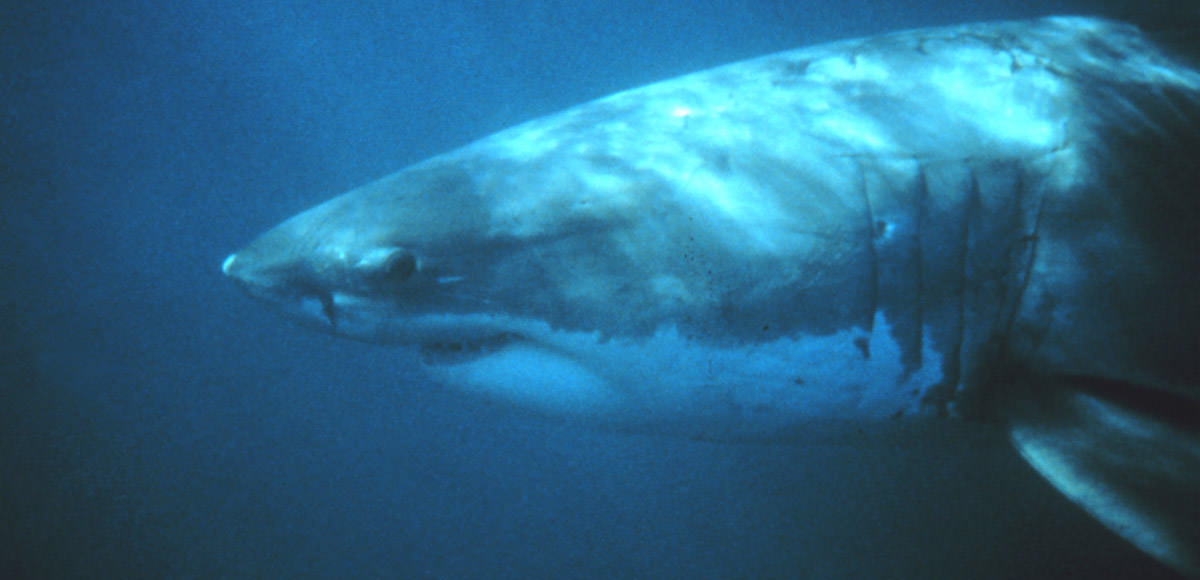Conservation

White sharks are not listed as an endangered or threatened species under the federal Endangered Species Act (16 U.S.C. 1531). In September 2012, NOAA National Marine Fisheries Service (NOAA Fisheries) determined that two filed petitions contain sufficient scientific information to indicate that the Northeastern Pacific (NEP) population of White Sharks population may warrant listing under the federal Endangered Species Act (ESA). NOAA Fisheries subsequently formed a Biological Review Team (BRT) of fisheries scientists to review the best available scientific and commercial information concerning the population structure, biological status, and threats facing White Sharks in the northeastern Pacific. Threats identified to White Sharks in this report included 1) fisheries mortality in U.S., Mexican and international waters, 2) loss of prey due to overharvesting, 3) small population effects (such as human-caused wildlife disturbances), 4) disease and predation, 5) habitat degradation linked to contaminants, and 6) global climate change. Their final status review report (PDF), released in June 2013, concluded that the NEP population was a distinct population segment but that it did not warrant listing at this time under the federal ESA (NOAA Fisheries Service, 2013).
While White Sharks are not listed under the U.S. ESA, they are listed under Appendix II of the Convention on International Trade of Endangered Species of Wild Fauna and Flora (CITES) . Species listed in Appendix II of CITES are those species that are not necessarily threatened with extinction but may become so if trade in these species is not regulated. White Sharks are listed on the International Union for Conservation of Nature (IUCN) Red List, as Vulnerable . White sharks are federally managed under the Magnuson-Stevens Fishery Conservation Act (16 U.S.C. 1801-1883). Within the Exclusive Economic Zone (12–200 nautical miles from shore) offshore California, Oregon and Washington, White Shark management requirements are specified in the Highly Migratory Species Fishery Management Plan, which prohibits the commercial fishing of White Sharks. If fishermen catch a White Shark, it must be released immediately unless other provisions for their disposition are established, such as for scientific study (Pacific Fishery Management Council, 2007).
The Shark Conservation Act (SCA) of 2010 was signed into law (P.L. 111-348) on January 4, 2011. It amended the High Seas Driftnet Fishing Moratorium Protection Act and the Magnuson-Stevens Fishery Conservation and Management Act in order to improve existing domestic and international shark conservation measures.
Protected in California
White Sharks have been protected in California waters since January 1994. Title 14, California Code of Regulations, Fish and Game Code Section 28.06 states that White Sharks may not be taken.
In January 2013, the California Department of Fish and Wildlife (CDFW) initiated their own review process, also in response to petitions from several NGO’s and shark conservation groups, to determine whether White Sharks warrant listing under the California Endangered Species Act (Title 14 CCR, Sections 2070-2079). CDFW recently published their status review report in March 2014, which recommended that White Sharks did not warrant listing under the state ESA at this time. The California Fish and Game Commission will likely decide whether to approve the CDFW recommendation sometime during the summer 2014. Read the CDFW report (PDF, 8MB).
In October 2011, California Governor Jerry Brown signed into law a bill banning the sale, trade and possession of shark fins. The ban took effect on January 1, 2012, and is similar to other bans that have been approved in eight U.S. States (including Hawaii, Washington, Oregon and Guam). In California, existing stocks of on-hand shark fins could only be sold until July 1, 2013 after which sales were no longer allowed.
Threats
Most shark species are slow to reach reproductive maturity and produce only a small number of young each year, making them highly susceptible to the threats of fishing and other human activities. According to the International Union for the Conservation of Nature and Natural Resources (IUCN), 32% of pelagic sharks and rays are threatened with extinction (critically endangered, endangered, or vulnerable); 24% are near threatened; 19% are of least concern and 25% are data deficient. Read more on NOAA shark management and conservation.
Information you share plays a critical role in the protection of the species. Learn more about White Sharks and the threats they face!

